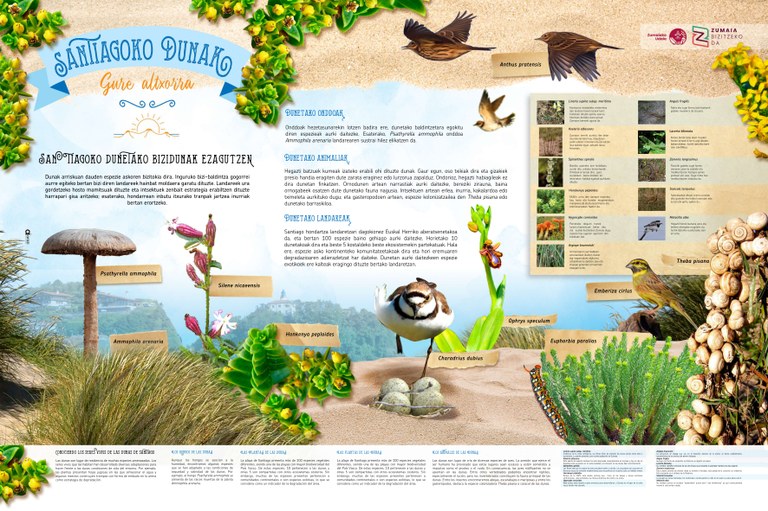2. Getting to know the living beings that inhabit the Santiago dunes

GETTING TO KNOW THE LIVING BEINGS THAT INHABIT THE SANTIAGO DUNES
Dunes are home to many endangered species. The living beings that make their home in them have developed a diverse range of adaptations in order to enable them to thrive in the harsh conditions of this environment. For example, plants often have juicy leaves in which they store water, and some insects build funnel-shaped traps in the sand to catch their prey.
Dune fungi
Although fungi are usually associated with damp, moist environments, some species have adapted to the dry, highly saline conditions found in dunes. For example, the fungus Psathyrella ammophila feeds off the dead roots of the plant Ammophila arenaria.
Dune plants
Santiago is home to over 100 different species of plant and is one of the most biodiverse beaches in the Basque Country. Of these species, 10 belong to the dunes and another 5 are shared with other coastal ecosystems. However, many others belong to continental communities or are exotic species, which is considered an indication of the degradation suffered by the area.
Dune animals
Dunes are a breeding ground for many bird species. However, due to pressure from humans, these breeding grounds are now scarce and are subject to impacts such as trampling and noise. Consequently, nesting birds no longer lay their eggs in these dunes. Other vertebrates include reptiles, particularly slow worms, although most of the animal species present in the dunes are invertebrates. Insects include bees, beetles and butterflies, and gastropods are mainly represented by the colonising species Theba pisana, commonly known as the sand hill snail.

 turismoa@zumaia.eus
turismoa@zumaia.eus
 Bulegoa
Bulegoa








